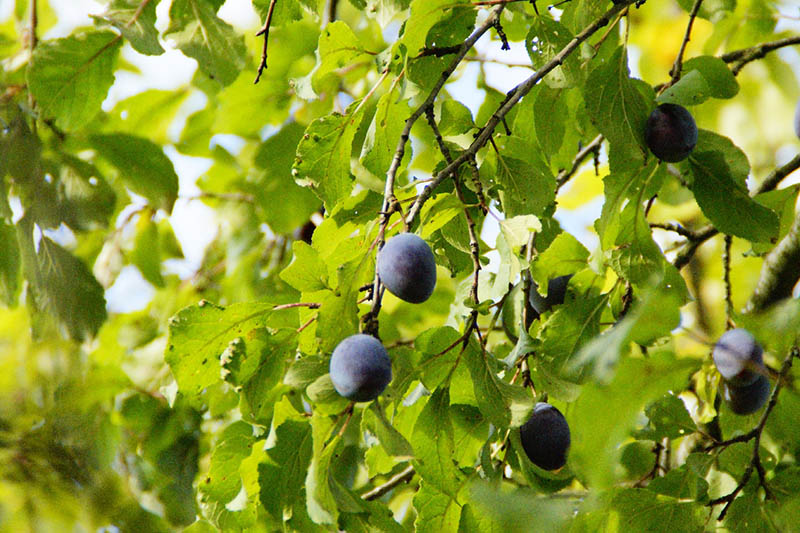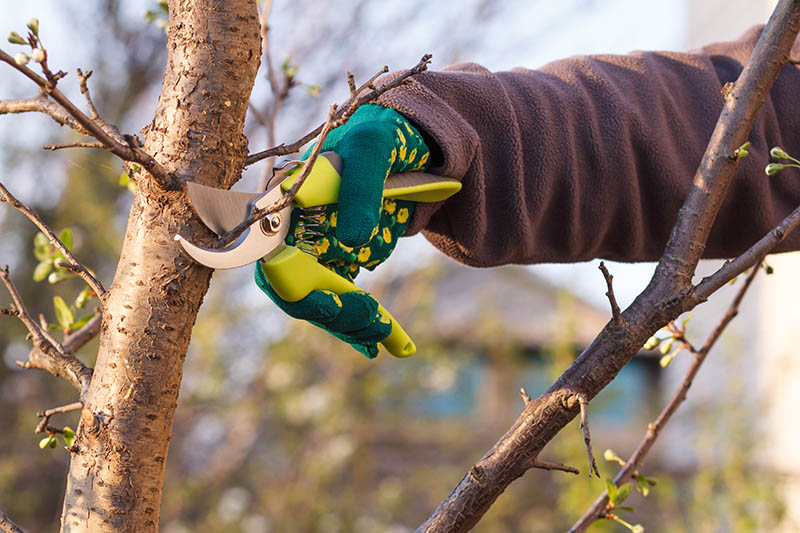When & How to Prune Plum Trees: 4 Expert Tips
-
Codee Chessher
- Last updated:

Fruit trees are our main source of fruit, so it is imperative that we learn how to best care for them. Plum trees are an atypical choice, but most don’t know that they’re the most beginner-friendly stone fruit tree.
Without proper pruning, though, the tree can become overburdened with fruit. This reduces overall yields and harm’s the tree’s health, so how and when exactly do you prune a plum tree? Let’s check out the most essential tips below.
The 4 Tips on When & How to Prune Plum Trees
1. Learn When to Prune
You can’t just prune anything and everything on the tree. Like other plants, plum trees are best pruned during certain times of the year. Young plum trees should be pruned before spring to prevent being infected by the silver leaf disease but established plums should be pruned during midsummer.
2. Pruning Young Plum Trees

You should only lightly prune young plum trees because cutting off too much can stunt the tree’s growth and have the opposite effect you’re trying to achieve.
The most common pruning method for young plums is the open bush style. What does this look like? While pruning, you’ll want to ensure that three or four of the major branches lay at a 45-degree angle, which allows light and air into the tree’s center and encourages growth.
Pruning will also allow the underdeveloped root system to catch up with the top of the tree, which has presumably grown quite a bit by now.
3. Pruning Established Plum Trees
Most plum trees 3 years and older are considered established because they’ve matured enough to bear fruit every year. Most people prune their plum trees in midsummer when you can hack off all the dead branches that didn’t produce fruit. Cutting off dead branches and non-productive branches will help the tree channel more nutrients and energy to fruit production, thereby increasing yields.
Prune the branches back by a third, then cut off new shoots that are growing into the center. Your goal here is to create an open wine glass shape, with branches at roughly a 45-degree angle. Next, remove any damaged, dead, or crossing buds. It’s always better to cut less and find out you need to cut more later rather than to hack off tons of growth at once. Start small and work your way up.
Always prune back toward buds where you want new growth and remove others. By doing this in increments, you’ll slowly shape the tree and where its growth will go in the future.
Another reason you prune in summer is to avoid dastardly silver leaf disease, which plagues plum trees at an alarming rate. Silver leaf strikes during the winter, so pruning in the spring or summer gives the tree’s pruning wounds time to recover. If you prune too early or late, the wound and branch will start to turn silver. In time, the disease will kill whole branches and spread to nearby plum or other stone fruit trees.
4. Shape the Tree

You won’t be cutting a lot each year, but it will add up to shape the tree’s growth. Every time you prune your plum tree, you’ll have to also hack off the new shoots that sprout up around the pruning cut.
Always cut away dead branches whenever you see them because they’re just sapping the tree’s energy. Don’t touch the tree until it’s pruning time, though. Otherwise, you could harm the tree’s delicate web of interconnected systems.
As a rule of thumb, the main stalk or trunk shouldn’t be more than 3 feet higher than your highest branches. You really only need to keep three to five main “scaffolding” branches when you prune, and then see how the tree develops over the next season and adjust from there.
Conclusion
Plum trees are a great stone fruit to grow in cooler climates, but it’s not always apparent how to prune them for success. Until they’ve produced fruit, you should keep a plum tree’s branches cut in a light, airy goblet shape. You’ll want to keep that general design once the tree matures, but be more ruthless with cutting off branches that don’t fit your design.
Featured Image Credit: JumpStory
Contents
